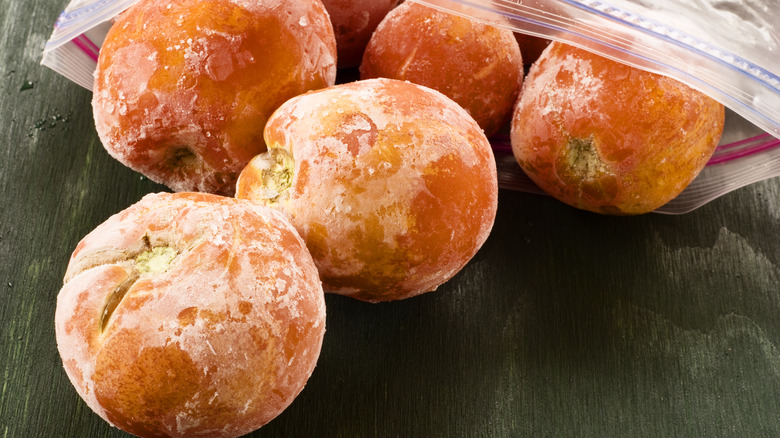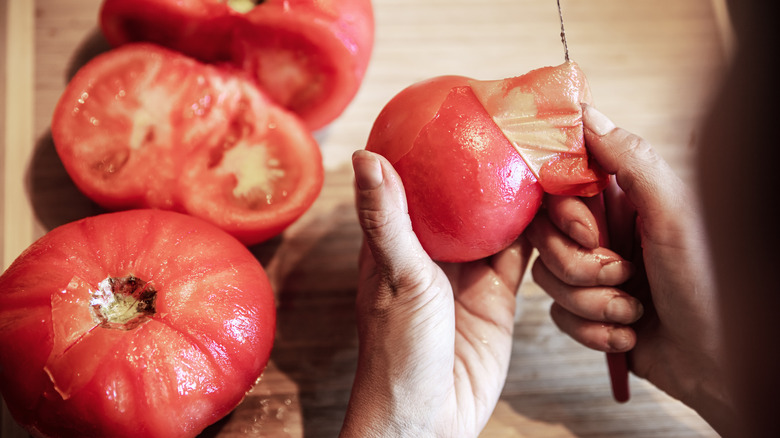The Freezer Hack That Makes Peeling Tomatoes Easier Than Ever
While some types of produce such as apples and carrots are fairly easy to peel, tomatoes are tricky because they are so soft. This means that you need to have a very, very light touch with a potato peeler in order not to have the entire thing go squish in your hand. There is a trick that makes peeling these vegetables — as the Supreme Court once declared tomatoes to be despite their technically being fruits — as easy as pizza pie, though: Put them in your freezer ahead of time.
While you might think frozen tomatoes would be easier to peel because their flesh is firmer, this isn't actually the reason for the freezin'. Instead, you freeze them and then thaw them. This loosens up the skin so you can just pull it off with your hands. It's kind of like peeling an egg, only tomato skins are much less brittle than eggshells. If you don't have time to freeze your tomatoes, though, you can obtain a similar effect by blanching them. Submerging tomatoes in a boiling water bath is slightly more messy and potentially painful than freezing, but also makes for a fast and easy way to peel them.
The best part of freezing your tomatoes, though, is that not only does this hack make for peaceful, easy peeling, but it also preserves your produce until the end of time (or a lengthy power outage). As the USDA says, frozen foods of any kind will stay safe to eat "almost indefinitely."
Why would you even need to peel a tomato, though?
One caveat about the frozen tomato trick: This is meant for tomatoes that are to be used in cooking, since freezing produce, tomatoes included, typically does nothing to improve its overall texture. A frozen tomato would be way too mushy to make a Caprese salad (want a recipe? We've got one) but then, tomatoes eaten raw are usually not peeled in the first place because raw tomato skin has a perfectly pleasant flavor and texture.
Why, then, would you wish to peel a tomato at all? While this step isn't entirely necessary for most recipes, there are some occasions when it may be preferable. While the skin on some types of tomatoes is thin and unobtrusive, Romas and beefsteak tomatoes are fairly thick-skinned, and excessive epidermis may add a little too much texture to soups or pasta sauces. Some even find cooked tomato skin to have a slightly bitter flavor, but if the taste and texture don't bother you, feel free to skip the step of skinning them. The bit that's bitter is an antioxidant known as flavonol, and tomato skins are rich in this beneficial substance. As it turns out, passing up on produce peeling is one way that being a little bit lazy actually pays off in nutritional benefits.

